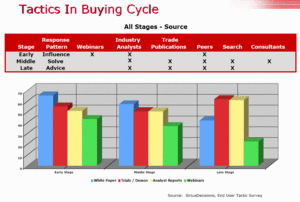 While many consider the search market to be locked up by GYM (Google, Yahoo and Microsoft), there are still many niche areas of search where the big three do not dominate.
While many consider the search market to be locked up by GYM (Google, Yahoo and Microsoft), there are still many niche areas of search where the big three do not dominate.
One of these areas is blog search.
Blog search is different than web search for a few reasons. First, the time-sensitivity of blog posts make them more like news than like web pages. Second, the page-rank approach of Google doesn't hold up very well for blogs, where the reputation of the blogger is more important than the number of links to a given post (particularly since links won't point to a page of a post that's just been authored). Third, the display of blog search results has typically been reverse chronological order (newest posts at the top), simply because it is hard to otherwise rank the relevance of the results.
While Technorati, Feedster, Icerocket and others have made inroads into this space, there have recently been a few new entrants,
 One of the more interesting recent entrants is Sphere. Sphere aims to improve the relevance of blog search by applying improved algorithms so that results are ordered by relevancy, not simply chronology. Sphere uses a combination of inbound and outbound links, metadata for the post and the blog and semantic text analysis to gain insights into what the blog is focused on. The combination of semantic analysis and analysis of inbound links also helps push blog spam to the bottom of the results (since no reputable blogs are likely to link to spam posts).
One of the more interesting recent entrants is Sphere. Sphere aims to improve the relevance of blog search by applying improved algorithms so that results are ordered by relevancy, not simply chronology. Sphere uses a combination of inbound and outbound links, metadata for the post and the blog and semantic text analysis to gain insights into what the blog is focused on. The combination of semantic analysis and analysis of inbound links also helps push blog spam to the bottom of the results (since no reputable blogs are likely to link to spam posts).
 In my testing, Sphere's relevance seems to hold up well. While results for some searches are similar to that of Technorati or Google, in others I found Sphere's results to be clearly superior. Particularly when searching for areas where the spammers are active, Sphere's ability to suppress those results provides a better search experience. For those who prefer the Technorati-like chronological view, Sphere allows you to prioritize the results in that order as well. You can also do a custom date search, entering start and end dates, particularly useful for looking back in time, but also useful for seeing the most relevant posts of the past week, for example.
In my testing, Sphere's relevance seems to hold up well. While results for some searches are similar to that of Technorati or Google, in others I found Sphere's results to be clearly superior. Particularly when searching for areas where the spammers are active, Sphere's ability to suppress those results provides a better search experience. For those who prefer the Technorati-like chronological view, Sphere allows you to prioritize the results in that order as well. You can also do a custom date search, entering start and end dates, particularly useful for looking back in time, but also useful for seeing the most relevant posts of the past week, for example.
Where Sphere really shows its stuff, however, is in their tools. In particular, they offer a bookmarklet called "Sphere It". A user looking at any piece of content on the web, can click "Sphere It" and the system will retrieve blogs posts that are similar to that content.
While "Technorati This!" is a similar offering, the approach is very different. Technorati This! uses links to find posts that point to the article you are searching. Sphere It uses semantic analysis (most likely a Bayesian-like categorization engine) to find posts that are similar in content to your article, not simply those which link to it.
 For an example, take a look at what happens when I apply Sphere It to an A.P. article on political parties fundraising for the upcoming congressional races.
For an example, take a look at what happens when I apply Sphere It to an A.P. article on political parties fundraising for the upcoming congressional races.
The results are 17 blog posts from the past day talking about the fund-raising efforts of the two parties, none of which seem to link back to the underlying AP article. The results are what you might expect to find using an enterprise classification application like Autonomy, as opposed to a simple link-based search.
 Content providers looking to blend user generated content with their own editorial may also find Sphere It a useful tool. Time Magazine has begun to use Sphere It on their Time.com site. When reading an article, you'll see a box marked "related blogs", which uses Sphere It to find blog posts with similar content.
Content providers looking to blend user generated content with their own editorial may also find Sphere It a useful tool. Time Magazine has begun to use Sphere It on their Time.com site. When reading an article, you'll see a box marked "related blogs", which uses Sphere It to find blog posts with similar content.
Sphere It is a compelling way to bring user generated content into your site with a simple "more like this" function.
Today, I find that I use a combination of Sphere and Technorati in my daily searches. More and more I am turning to Sphere first, but Technorati still covers a wider universe and I check them when I don't find what I need in Sphere.
Blog search remains a wide open market, and I won't be surprised if the GYM crowd improve their performance over time (through acquisition or otherwise). In the interim, users will continue to reap the benefits of continued innovation. I recommend you give Sphere and Sphere It a spin. You'll be pleased with the results.
 Alacra today announced the availability of free RSS feeds in the Alacra Store containing alerts on the latest credit and investment research from premium content publishers such as CreditSights, Fitch Ratings, Moody’s Investors Service, and Thomson Financial.
Alacra today announced the availability of free RSS feeds in the Alacra Store containing alerts on the latest credit and investment research from premium content publishers such as CreditSights, Fitch Ratings, Moody’s Investors Service, and Thomson Financial.















